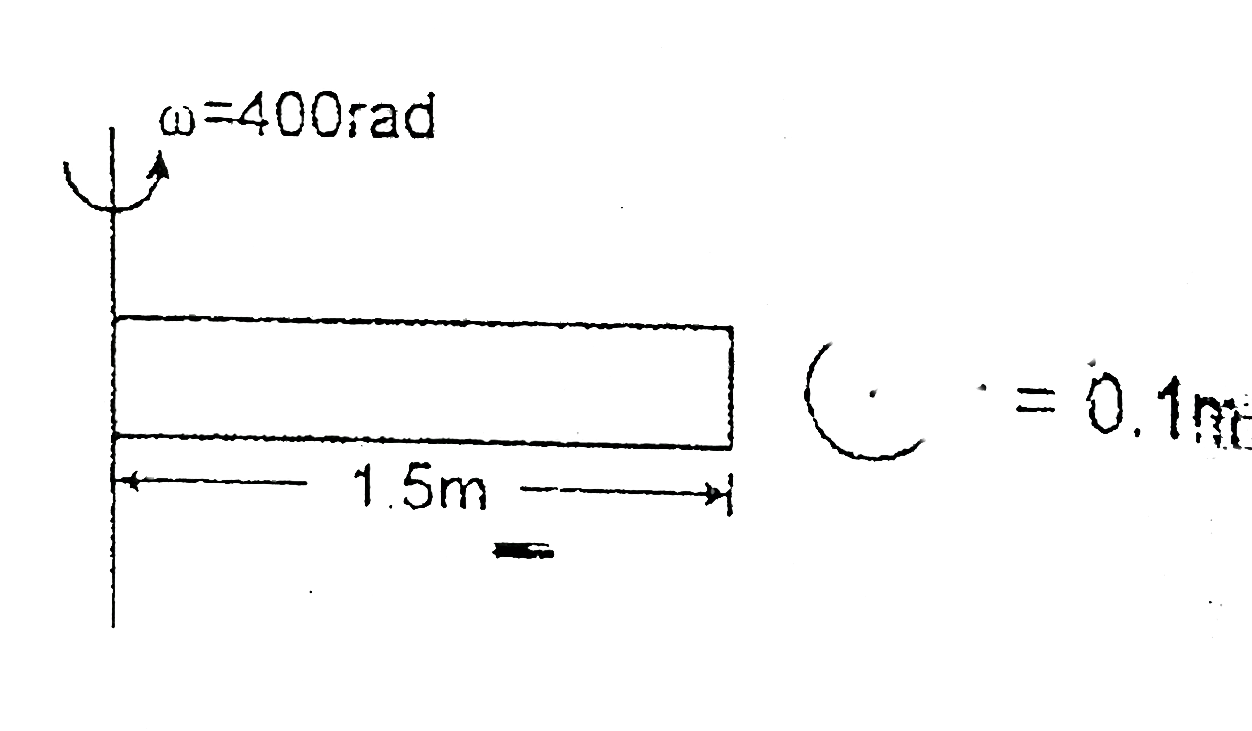One end of thin aluminium rod (cross -sectional Area =10−6m2) is bult welded to the end of copper rod with same diameter. Both rods are very long and under uniform tension of 900N Given that
Y(Cu)=1.6×1011Nm−2,Y(Al)=0.9×1011Nm−2
ρ(Cu)=8.1×103kgm−3,ρ(Al)=2.5×103Kgm−3
The value of relection factor ArAi for longitudinal pulse approacing the junction along copper rod is 0.15
The value of reflection factor ArAi for longitudinal pulse approachig the junction along copper rod is approximately 0.3
The value of reflection factor ArAi or transverse pulse approaching the junction along copper rod is 0.15
The value of reflection factor ArAi for transverse pulse approaching the junction along copper rod is approximately 0.3
The correct Answer is:B, C
To solve the problem, we need to calculate the relaxation factor for both transverse and longitudinal waves in the aluminum and copper rods.
Step 1: Calculate the speed of transverse waves in aluminum (V_al)
The formula for the speed of transverse waves is given by:
Vt=√Fμ
Where:
- F is the force (900 N)
- μ is the mass per unit length, given by μ=ρ⋅A
For aluminum:
- Cross-sectional area A=10−6m2
- Density ρAl=2.5×103kg/m3
Calculating μAl:
μAl=ρAl⋅A=(2.5×103)⋅(10−6)=2.5×10−3kg/m
Now, substituting into the speed equation:
VAl=√9002.5×10−3
Calculating VAl:
VAl=√360000=600m/s
Step 2: Calculate the speed of transverse waves in copper (V_cu)
Using the same method for copper:
- Density ρCu=8.1×103kg/m3
Calculating μCu:
μCu=ρCu⋅A=(8.1×103)⋅(10−6)=8.1×10−3kg/m
Now, substituting into the speed equation:
VCu=√9008.1×10−3
Calculating VCu:
VCu=√111111.11≈333.33m/s
Step 3: Calculate the relaxation factor for transverse waves (AR)
The relaxation factor is given by:
AR=VAl−VCuVAl+VCu
Substituting the values:
AR=600−333.33600+333.33=266.67933.33≈0.286
Step 4: Calculate the speed of longitudinal waves in aluminum (V_al_long)
The formula for the speed of longitudinal waves is given by:
VL=√Yρ
Where Y is Young's modulus.
For aluminum:
- YAl=0.9×1011N/m2
Calculating VAl_long:
VAl_long=√0.9×10112.5×103=√36000000=6000m/s
Step 5: Calculate the speed of longitudinal waves in copper (V_cu_long)
For copper:
- YCu=1.6×1011N/m2
Calculating VCu_long:
VCu_long=√1.6×10118.1×103=√19753086.42≈4444.44m/s
Step 6: Calculate the relaxation factor for longitudinal waves (AR_long)
Using the same formula for the relaxation factor:
ARlong=VAl_long−VCu_longVAl_long+VCu_long
Substituting the values:
ARlong=6000−4444.446000+4444.44=1555.5610444.44≈0.149
Final Answers:
- Relaxation factor for transverse waves AR≈0.286
- Relaxation factor for longitudinal waves ARlong≈0.149
The formula for the speed of transverse waves is given by:
- F is the force (900 N)
- μ is the mass per unit length, given by μ=ρ⋅A
- Cross-sectional area A=10−6m2
- Density ρAl=2.5×103kg/m3
Using the same method for copper:
- Density ρCu=8.1×103kg/m3
The relaxation factor is given by:
The formula for the speed of longitudinal waves is given by:
- YAl=0.9×1011N/m2
For copper:
- YCu=1.6×1011N/m2
Using the same formula for the relaxation factor:
- Relaxation factor for transverse waves AR≈0.286
- Relaxation factor for longitudinal waves ARlong≈0.149
Similar Questions
What should be the length of steel and copper rods at 0∘C that the length of steel rod is 5 cm longer than copper at all termperature? Given αCu=1.7×105.∘C−1 and αsteel=1.1×105.∘C−1.
View SolutionTwo wires one of copper and other of iron having same cross-section area and lengths 2 m and 1.5 m respectively are fastened end and stretched by a load 10 N. If copper wire is stretched by 2mm then find the total extension of combined wire, YCu=1×1011N/m2 and YFe=3×1011N/m2.
View Solution
Knowledge Check
- Question 1 - Select One
A copper wire of length 2.4 m and a steel wire of length 1.6 m, both of diameter 3 mm, are connected end to end. When stretched by a load, the net elongation found to be 0.7 mm. The load appled is
(YCopper=1.2×1011Nm−2,Ysteel=2×1011Nm−2)A1.2×102NB1.8×102NC2.4×102ND3.2×102N
A steel rod of length 25cm has a cross-sectional area of 0.8cm2 . The force required to stretch this rod by the same amount as the expansion produced by heating it through 10∘C is (αsteel=10−5/∘C and Ysteel=2×1010N/m2)
View SolutionHardness of water is 200 ppm. The normality and molarity of CaCO3 in the water is
(a). 2×10−6(N,2×10−6M
(b). 4×10−2N,2×10−2M
(c). 4×10−3N,2×10−3M
(d). 4×10−1N,2×10−1MView SolutionGiven Y=2×1011N/m2,ρ=104kg/m3
Find out elongation in rod.
 View Solution
View SolutionA wire 10m long has a cross-sectional area 1.25×10−4m2. It is subjected to a load of 5kg. Wt. If Y for the material is 4×1010Nm−2, calculate the elongation produced in the wire. Take g = 10ms−2.
View SolutionA copper wire of cross sectional area 0.01cm2 is under a tension of 20N. Find the decrease in the cross sectional area. Young modulus of copper =1.1×1011Nm−2 and Poisson ratio 0.32.
View SolutionThe adjacent graph shows the extra extension (Δx) of a wire of length 1m suspended from the top of a roof at one end with an extera load Δw connected to the other end If the cross sectional area of the wire is 10−5m2 calculate the Young's modulus of the meterial of the wire
(A) 2×1011N/m2 (B) 2×10−11N/m2 (c) 3×10913)N/m3 (D) 2×1016N/m2
 .View Solution
.View SolutionCalculate the Poisson's ratio for steel. Given that Young's modulus is 2×1011Nm−2 and rigidity modulus is 8×1010Nm−2.
View Solution

